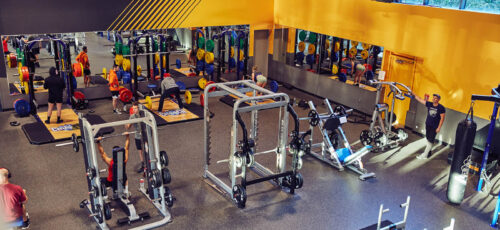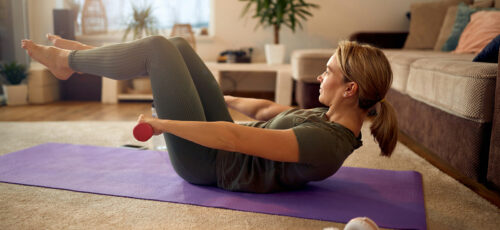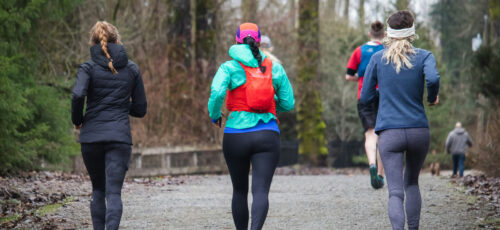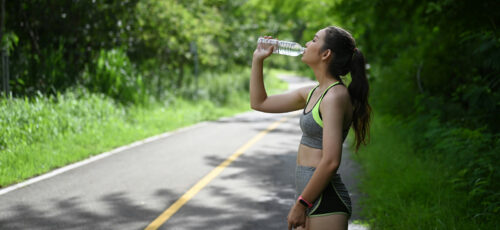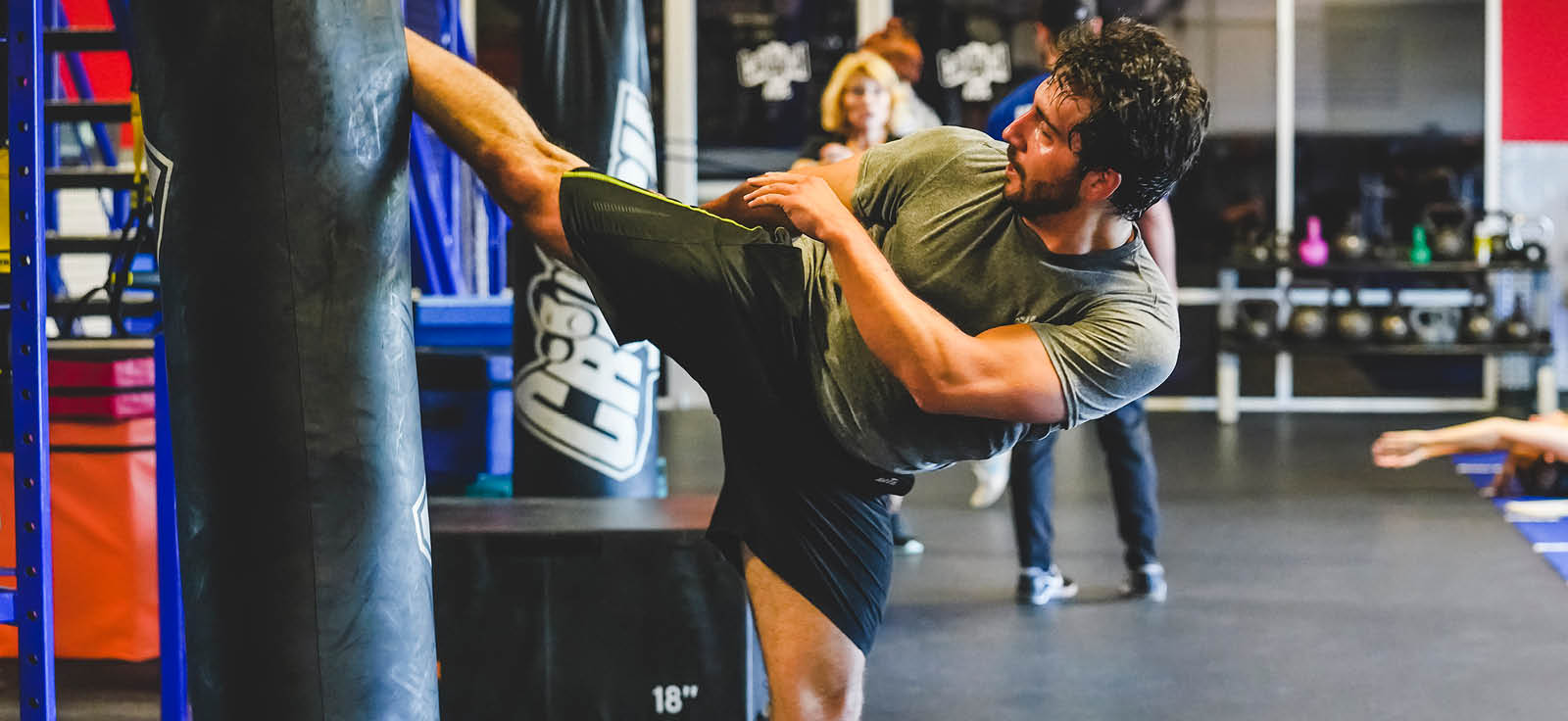
If you’re looking to run a faster mile, perfect your deadlift, boost your confidence on the basketball court, or prepare more yourself, the secret to success is simple: practice the athletic skills that will help you reach your goals.
At Crunch Fitness, we know that reaching your peak potential isn’t just about working out harder—it’s about working out smarter. That means focusing on the right techniques, movements, and training strategies tailored to your unique aspirations.
For example, if you want to improve agility for your next soccer match, incorporating lateral drills or cone exercises into your routine can make a difference. On the other hand, if you’re focused on building explosive strength for a powerlifting competition, structured weightlifting, and plyometric sessions will help you dominate. Whatever your goal, sharpening your athletic abilities in a targeted way ensures you’re not just putting in effort but seeing real, measurable progress.
At Crunch Fitness, we’re all about supporting gym-goers like you with top-notch equipment, motivating group classes, and expert personal trainers who can guide you through every step.
Whether you’re an experienced athlete or just starting your fitness journey, we have everything you need to customize your workouts and achieve greatness. Ready to unlock your full potential? Let’s get started today!
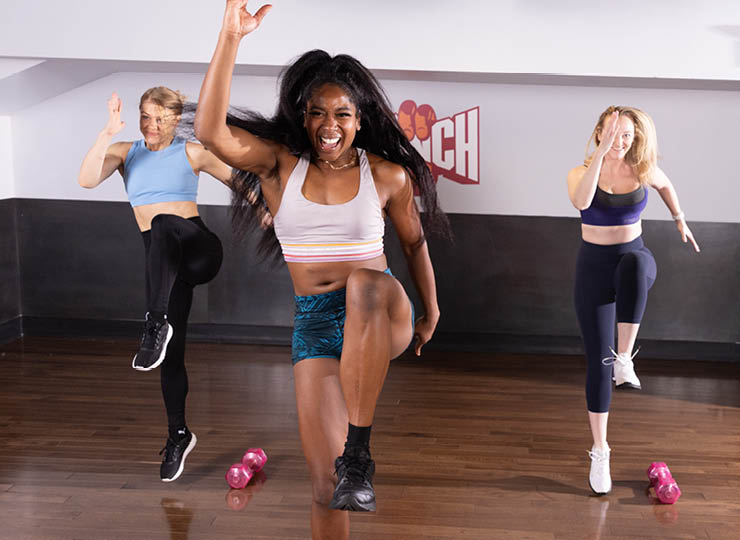
Getting Fit vs. Improving Performance: Differences
Fitness and athletic performance go hand in hand, but they serve slightly different purposes. While general fitness focuses on overall health and well-being, improving athletic performance is honing specific skills and abilities to excel in sports or physical activities.
Both are important, whether you’re an athlete striving for excellence or simply looking to stay active and healthy. At Crunch Fitness, we’re here to help you find that balance.
The key components of fitness—body composition, cardiovascular endurance, flexibility, muscular endurance, and muscular strength—play an important role in fitness and athletic performance. For example, improving cardiovascular endurance reduces the risk of heart disease and enhances one’s ability to perform at higher levels in competitive sports.
Likewise, flexibility is essential for injury prevention and maintaining a healthy range of motion, whether reaching for a ball on the playing field or simply bending to tie your shoes. These foundational elements support physical health, mental focus, and athletic success.
To optimize both fitness and performance, the American College of Sports Medicine (ACSM) recommends incorporating a mix of activities into your routine: 150 minutes of moderate-intensity cardio or 75 minutes of vigorous-intensity cardio weekly, alongside resistance training 2-3 times a week and flexibility exercises at least twice a week.
This framework helps young athletes or those pursuing competitive sports build the mental and physical skills needed to excel while reducing the risk of injury.
With guidance from our expert trainers, cutting-edge equipment, and motivating group classes, Crunch Fitness is your partner in achieving a stronger, healthier, and more capable body—whether your goal is to dominate the court or feel your best every day.
Mastering Skill-Related Fitness Components
Regarding fitness, there’s more to consider than staying healthy—especially if you’re chasing specific performance goals. The six skill-related fitness components—agility, balance, coordination (hand-eye or foot-eye), power, reaction time, and speed—are game-changers for athletes and anyone looking to refine their abilities.
While the health components of fitness, like cardiovascular endurance and muscular strength, are essential for everyone, the skill-related components are especially critical for athletes.
For instance, if you’re lacing up for daily walks to keep your heart healthy, you don’t need to focus on building the speed required for a five-minute mile. But if you’re a baseball player, sharpening your agility, coordination, and reaction time could make all the difference on the field. Similarly, weightlifters aiming for peak performance should zero in on power, balance, and strength to crush their goals.
Let’s build your skills to dominate your playing field and crush your fitness goals.
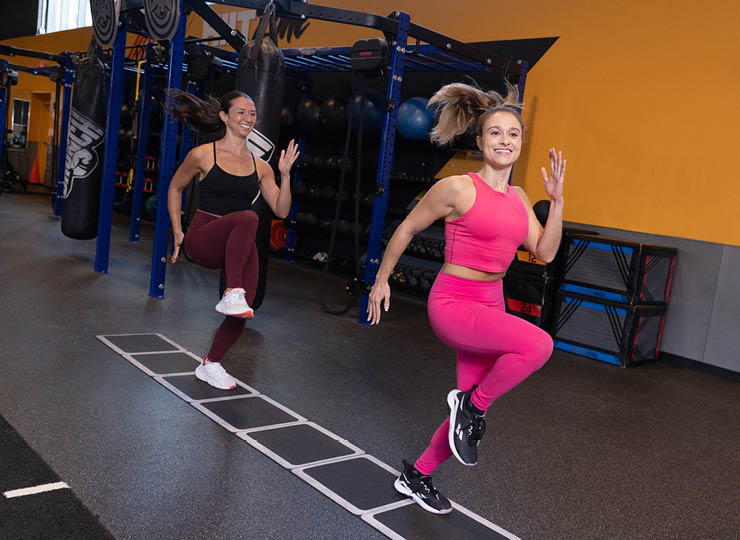
Power
Power is the perfect blend of speed and strength—it’s all about how quickly you can generate maximum force. From Olympic weightlifters executing jaw-dropping lifts to football players powering through defenders and gymnasts performing gravity-defying feats, power is critical for peak performance in sports.
But it’s not limited to these high-intensity activities; athletes in basketball, volleyball, tennis, and more can greatly benefit from boosting their power.
Think about it: jumping to grab a rebound in basketball relies on explosive leg power while spiking a volleyball with precision and force demands both upper- and lower-body strength. Even tennis players need power to deliver those game-winning serves. Developing this skill can transform your athletic abilities, giving you the edge you need to excel in your favorite sport or activity.
Focus on exercises that combine resistance and speed through dynamic strength-training moves to hone your power. Incorporate workouts like plyometric box jumps to build explosive leg strength, pushing a weighted sled while sprinting for full-body force, clean-and-jerk lifts for a total power boost, or kettlebell swings for speed and endurance.
Speed
When you think of speed, the first image might be a sprinter racing down the 100-meter track. But speed isn’t one-size-fits-all—it’s relative to your sport’s or activity’s demands.
For a sprinter, speed means covering a short distance in mere seconds. For a marathon runner, it might mean shaving seconds off their per-mile pace and maintaining that improvement for over four hours. Both athletes are training for speed, but their paths to success look very different.
The way you train for speed depends on your goals, whether you’re chasing a new personal record in the marathon or aiming to dominate on the basketball court.
High-intensity interval training (HIIT) is one of the most effective ways to enhance speed across sports. By alternating between all-out effort and rest, HIIT helps your muscles, lungs, and heart adapt to working at higher intensities.
For example, a sprinter might focus on short, explosive intervals of 40 to 400 meters, while a long-distance runner might tackle mile repeats, running hard for a full mile before resting and repeating.
These principles aren’t just for runners—HIIT can boost your speed in swimming, cycling, basketball, soccer, or nearly any sport where quickness and agility matter. With the right conditioning, you’ll develop speed and the ability to manage challenges, cope with the stress of high-intensity performance, and ultimately grow as an athlete.
Agility
Agility is all about swift, precise movement and the ability to change direction seamlessly. Picture a basketball player darting across the court—sliding, jumping, twisting, and backpedaling—all while keeping their eye on the ball and anticipating their opponent’s next move. That level of agility doesn’t just happen; it’s a skill honed through targeted training and dedication to mastering movement.
Agility isn’t limited to the basketball court—it’s a vital skill for athletes across various sports and activities. From soccer players weaving through defenders to tennis players adjusting to unpredictable ball trajectories, agility is the key to staying ahead of the game. It’s about training your body to react efficiently and effectively, even in high-pressure situations.
This kind of training enhances performance and helps with injury prevention, as agile movements reduce stress on joints and muscles during quick changes in direction.
To develop your agility, incorporate dynamic drills into your training routine. For example:
- Ladder Drills: An agility ladder is perfect for improving foot speed and precision. Practice specific foot patterns, increasing your pace as you improve.
- Cone Drills: Set up cones in a T or star pattern. Sprint, slide, backpedal, or pivot as you navigate the course, fluidly building your ability to change direction.
At Crunch Fitness, we help you align your training with your athletic goals. With expert coaching and the right tools, you can sharpen your agility and take your game to the next level—both on and off the field. Let’s train, grow, and move forward together!
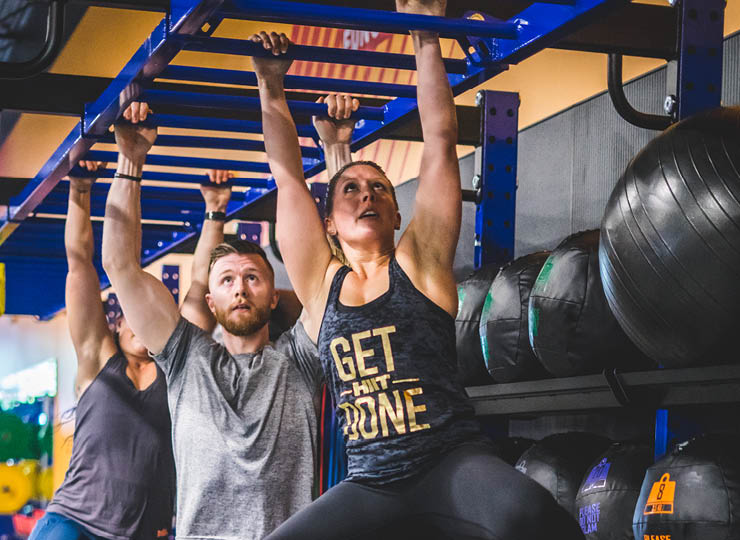
Coordination
Coordination is at the heart of your success, whether hitting a golf ball, catching a fly ball in softball, or dribbling across a basketball court. It’s the skill that connects what you see to how you respond, allowing your hands, feet, or entire body to move with precision toward your goal. From archery to ultimate Frisbee, mastering coordination is essential for athletes in nearly every sport.
Improving coordination doesn’t require high-tech equipment—simple, fun exercises can significantly improve it. Try playing catch to fine-tune your hand-eye coordination or dribbling a ball to enhance your control during fast-paced situations.
Activities like juggling or jumping rope are excellent for challenging your focus and reaction time while building the skills needed to thrive in sports and daily life. With consistent practice, coordination training supports your ability to perform, cope with challenges, and grow as an athlete.
Balance
Balance is more than staying upright—it’s about your ability to adjust to changing conditions, whether on a yoga mat, a skateboard, or a muddy trail. This skill involves proprioception, the awareness of where your body is in space, and the ability to make quick adjustments as your center of gravity shifts.
From gymnasts sticking a landing to trail runners avoiding injury, balance is necessary for safety and performance across athletics. Enhancing your balance can be both simple and dynamic.
Start with single-leg exercises like standing yoga poses or progress to more advanced training using a BOSU ball or balance discs. Incorporating these tools into movements like squats, lunges, or push-ups challenges your body to stabilize on an uneven surface, improving strength and coordination simultaneously. For an extra boost, jump on a trampoline or rebounder to engage your sense of movement and spatial awareness.
Reaction Time
When the stakes are high, the ability to react swiftly can make all the difference. Reaction time is your body’s ability to respond to an external stimulus almost instantly—a skill crucial in fast-paced sports like tennis, basketball, or soccer.
Picture a tennis player racing toward the ball as it rockets off their opponent’s racquet. Their lightning-fast response isn’t just instinct; it results from training and a strong mind-body connection.
Reaction time relies on a seamless collaboration between your senses and actions. Your eyes detect the stimulus, your brain interprets it, and your body springs into motion. This process can be sharpened with practice and experience, allowing athletes to anticipate and respond to challenges more effectively.
For example, experienced players can predict the ball’s trajectory based on subtle cues, which gives them the edge in reacting quicker and performing better.
Want to hone your reaction time? Start with sport-specific drills tailored to your goals. For example, field a ball in softball or baseball to improve hand-eye coordination.
Practice defending the goal in soccer or hockey, where you must anticipate and counteract rapid plays. You can also use tools like reaction balls or engage in games like table tennis or hacky sack to sharpen your reflexes.
Improving reaction time isn’t just about physical ability; it’s about understanding the game and conditioning your body to adapt under pressure. Over time, these exercises help you transition from reacting to leading, empowering you to stay ahead of the competition and confidently handle challenges.
Physical Development for Peak Performance
Achieving athletic excellence requires a dedicated focus on physical development, which lays the groundwork for success on and off the playing field. A well-rounded training program is key; blending strength and conditioning exercises with agility and flexibility work to enhance overall performance.
These foundational components improve athletic ability and help young athletes prevent injuries and stay in the game longer. Athletes can avoid setbacks while honing their skills by emphasizing proper technique and body control.
Incorporating plyometric exercises and power training into your routine is essential to build explosiveness and speed. These movements, designed to enhance your ability to generate force quickly, are critical for sports that demand power bursts, whether sprinting down the basketball court or leaping to block a shot.
Pairing these workouts with a strong focus on nutrition and recovery ensures your body is operating at peak performance. Stretching, foam rolling, and allowing ample time for sleep and rest are vital for recovery and growth, helping athletes sustain their physical conditioning over time.
Transferring Skills to Real-Life Situations
Athletics teach lessons that transcend the playing field, shaping athletes into well-rounded individuals equipped to excel in life. The skills developed in sports—teamwork, leadership, time management, and adaptability—are invaluable in the professional world. Recognizing and fostering these parallels is crucial for young athletes, as these abilities help them transition seamlessly into other areas of life.
For example, learning how to lead a team or solve problems under pressure equips athletes to navigate the complexities of their future careers effectively.
Coaches and mentors are pivotal in encouraging athletes to embrace leadership opportunities, whether by captaining a team or mentoring younger players. These experiences build confidence and cultivate a growth mindset, enabling athletes to see challenges as opportunities for development. By focusing on personal growth and embracing new experiences, athletes can nurture a lifelong love of learning.
Athletics also open doors to practical skill-building beyond the game. Providing young athletes with opportunities to explore areas such as marketing, finance, and entrepreneurship prepares them for success in life after sports.
These transferable skills ensure that their time on the court, field, or track is not just about performance but about becoming a well-rounded, capable individual ready to tackle the world’s challenges.
Ultimately, physical and mental development through sports builds the foundation for a life of success. Whether aiming for athletic excellence, improving mental resilience, or preparing for future endeavors, every effort on the playing field supports growth, resilience, and the ability to thrive in any arena.
Reach Your Fitness Goals With Crunch
Honing athletic skills means tailoring your training to match your fitness goals, whether agility, power, or speed. Focused practice improves performance, builds resilience, and develops traits like leadership and adaptability. With the right approach, you can overcome challenges and achieve athletic excellence.
Crunch promotes a culture of positivity, inclusivity, and fun with no judgments by providing an environment for all individuals regardless of their health and fitness goals. Find a Crunch gym near you to try our free trial membership, or join Crunch now. We’re here for you – at the gym or at home. Access the best live & on-demand workouts anytime, anywhere with Crunch+. Ready to get sweaty? Try hundreds of workouts for free! Start your free trial now!











